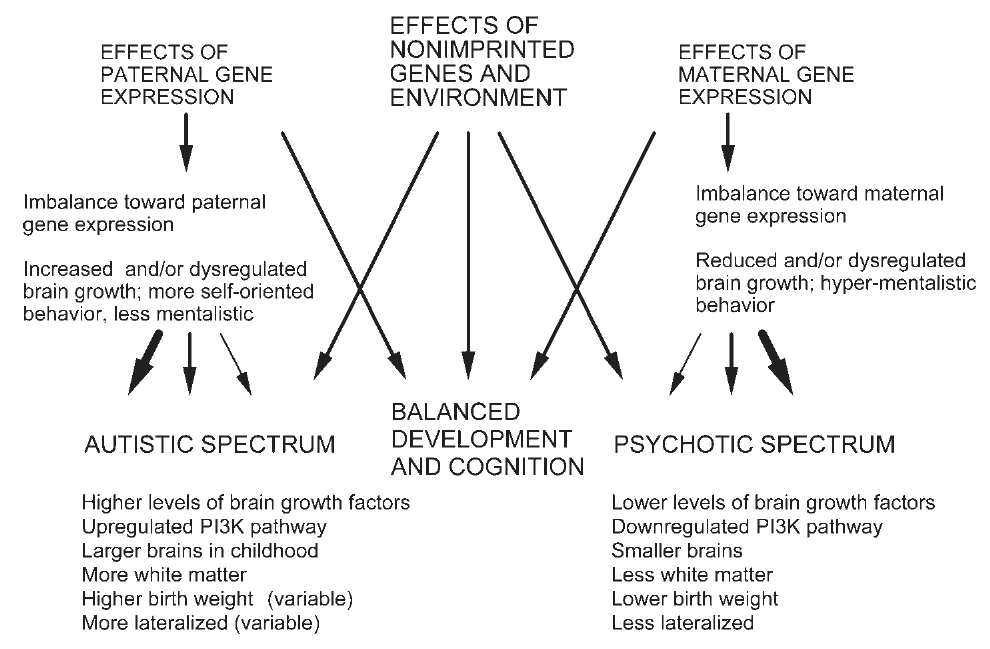This is a schematic review of literature on kinship theory and brain function that is relevant to our project.
Kinship theory
The model of Ubeda2012 assumes a viscous population, “where dispersal is rare enough for populations to be closely related” (kin selection on Wikipedia). However, kin recognition might be more applicable in humans.
The imprinted brain theory
This theory Badcock2011, Crespi2008a, Crespi2008 asserts that maternal genes promote hypermentalism corresponding to psychotic spectrum disorders (e.g. SCZ) while paternal ones promote hypomentalism corresponding to autistic spectrum disorders. This is supported by genomic sister-disorders, where one disorder is associated with imbalance towards maternal and the sister disorder with that towards paternal genes at an imprinted gene cluster; an example is the Prader-Willi syndrome (maternal dominance) paired with the Angelman syndrome (paternal dominance). Demographic studies of post-famine periods suggest that the starvation of the mother mimics the maternally expressed imprinted genes’ resource-sparing, growth-inhibiting effect and, suggestively, this coincides with increased risk of SCZ of the child. Below is a figure taken from Crespi2008a.
